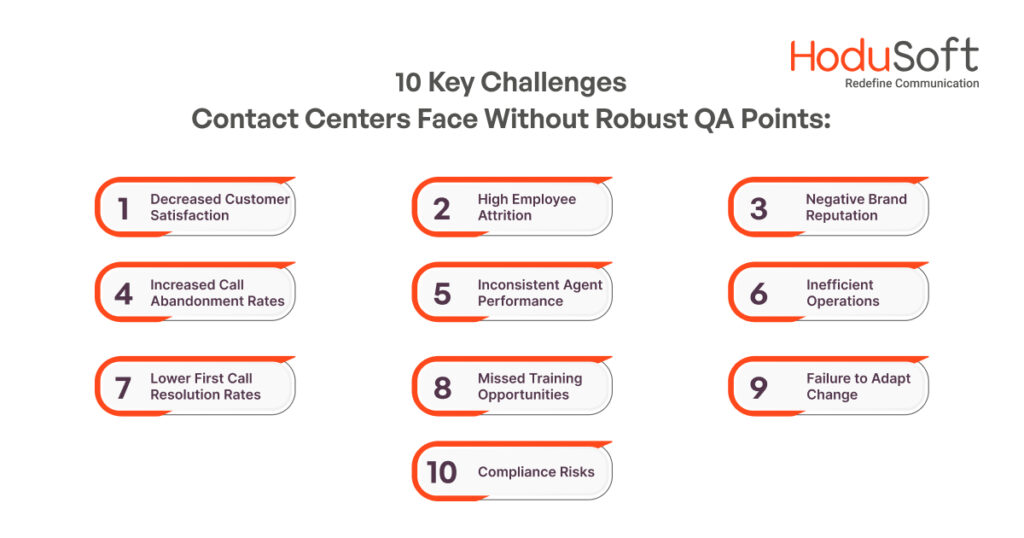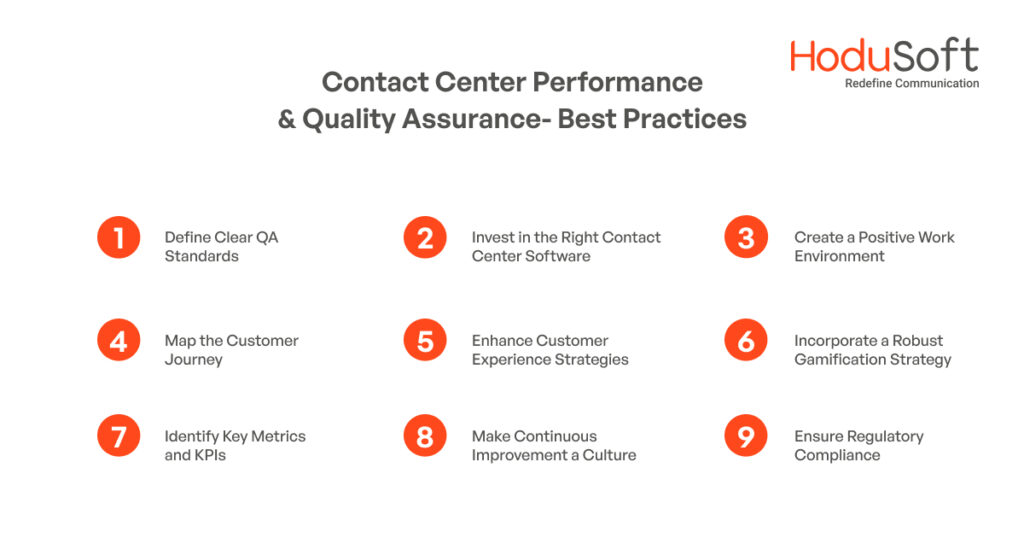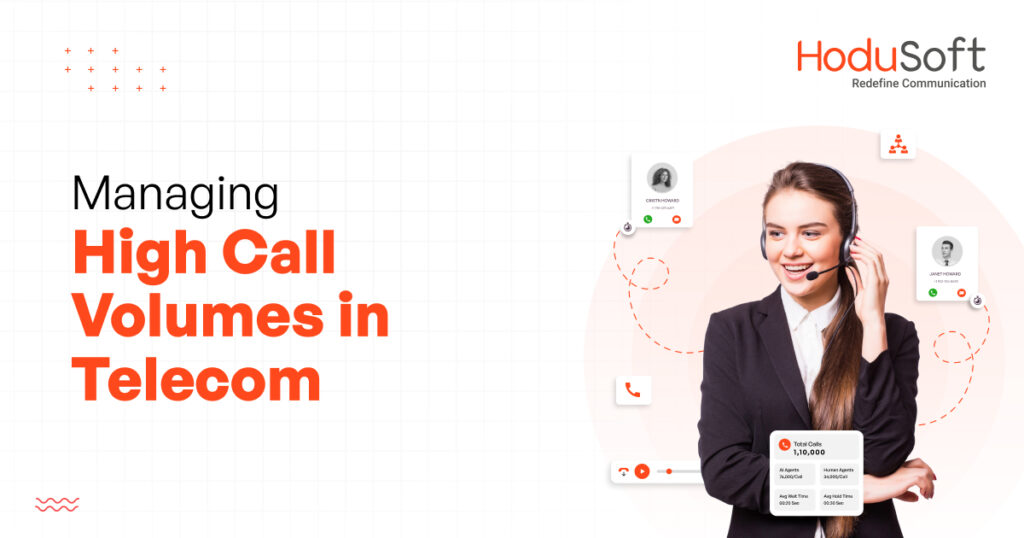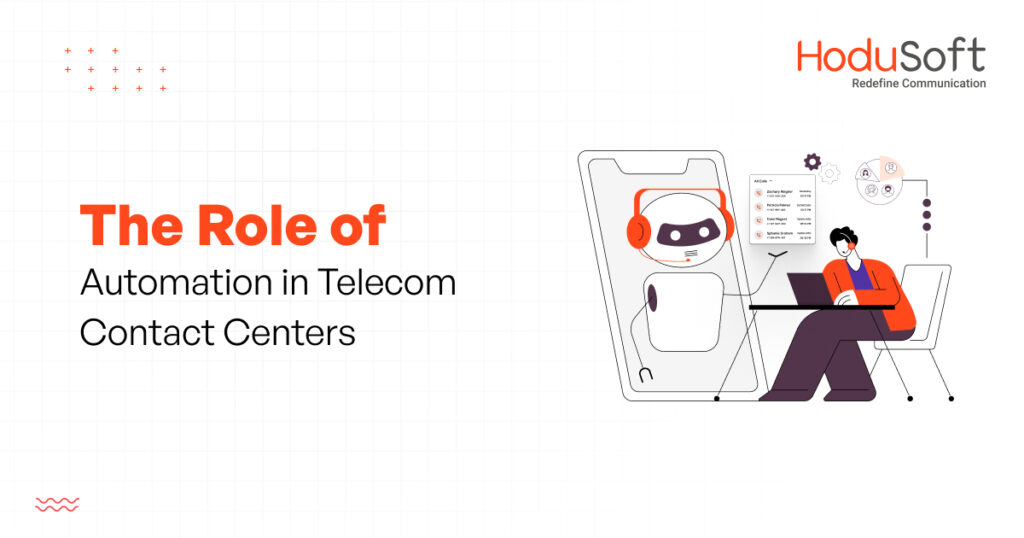Achieving Excellence: Best Practices for Contact Center Performance and Quality Assurance
Whether you are an entrepreneur or a professional in the contact center industry or any other sector, you know that implementing best practices can enhance performance by leaps and bounds and drive success.
That’s why it’s not surprising that well-known American businessman Millard S. Drexler said, “I’m looking for best practices constantly.” He gives the example of Apple’s products, which are noted for their beautiful design, functionalities, and aesthetics. But more than that, it’s the brand’s positioning, marketing, placement, and route to the market that inspires him.
When it comes to finding and implementing best practices, great minds think alike. As Chad White, the author of ‘Email Marketing Rules’ rightly remarked, “Best practices are those practices that generally produce the best results or minimize risk.” Another noted writer and entrepreneur, Cynthia Morris, said, “Best practices are ones that consistently work for you. Always.”
This blog post not only outlines some tried and tested best practices for enhancing operations in contact centers but it also aims to empower contact center owners and senior executives to create more best practices for better results.
It reminds us of the words of author Paul Sloane, “Innovation means replacing the best practices of today with those of tomorrow.” Or as eminent HR executive and author Kristopher Newbauer said, “Thought leaders don’t follow best practices. They create them.”
If you are an owner of a contact center or a senior professional in one, then this blog post is for you. So, without further ado let’s dive right in and know the best practices using which contact centers can take their performance and quality to the next level. Read on and thank us later!
Significance of Contact Centers in Customer Service
Contact centers serve as the primary channel for communication between business organizations and customers. From general queries to support requests to complaints, they handle every type of customer interaction.
However, a high-performing contact center not only addresses customer queries promptly but also creates a positive customer experience, which leads to enhanced loyalty and retention.
Why Monitoring Performance and Ensuring Quality Assurance Is Important in Contact Centers?
Performance in a contact center refers to how effectively agents manage calls, resolve issues, and meet established benchmarks.
Quality assurance (QA) involves systematic monitoring and evaluation of interactions to ensure they meet predefined standards.
Together, performance and QA form the backbone of a successful contact center. By doing that, a culture of excellence and continuous improvement is maintained.
Without robust quality assurance, contact centers risk declining customer satisfaction, increased agent turnover, and ultimately, a negative impact on the brand. Poorly managed call interactions can lead to unresolved customer issues, resulting in frustration and damage to the organization’s reputation. Moreover, a lack of QA can create an inconsistent service experience, making it difficult for agents to know how to improve or meet customer expectations.
What Challenges Contact Centers Face If They Don't Implement Robust Quality Assurance?
Noted American broadcaster Edward R. Murrow rightly said, “We cannot make good news out of bad practice.” Contact center owners must keep the quote in mind. Contact centers that fail to implement robust quality assurance (QA) face several significant challenges, including:

1. Decreased Customer Satisfaction
Without QA, customer satisfaction is not possible. As the saying goes, “Quality is remembered long after the price is forgotten.” If quality is inconsistent then it can lead to unresolved issues and frustration among customers.
2. Increased Call Abandonment Rates
Would it surprise you to know that the lack of quality can increase call abandonment rates? Long wait times and poor service can drive customers to abandon calls. It can result in lost opportunities for resolution and retention.
3. Lower First Call Resolution Rates
A lack of QA can lead to agents missing key information or providing incorrect solutions. This increases the likelihood of customers having to call back for further assistance.
4. High Employee Attrition
Can a lack of QA lead to a high employee attrition rate? Yes, it certainly can! You see when a contact center doesn’t have the right QA in place, it is more likely to be inconsistent with its service quality. And that would cause stressful environments for agents, which would lead to burnout and high attrition rates.
5. Inconsistent Agent Performance
This is an obvious outcome of bad QA practices. Without proper monitoring, agents may not adhere to best practices. It can result in varied performance levels that affect overall service quality.
6. Missed Training Opportunities
QA processes help identify skill gaps and training needs. Without them, organizations miss valuable insights that could enhance agent performance.
7. Compliance Risks
For industries with regulatory requirements, a lack of QA can lead to non-compliance issues, resulting in penalties and reputational damage.
8. Negative Brand Reputation
For businesses, brand reputation matters a lot. Poor service experiences can lead to negative reviews and diminished public perception. And that hugely impacts long-term business success.
9. Inefficient Operations
Ineffective processes may persist without proper QA. When organizations don’t use the right QA processes, they are at higher risk of inefficiencies and wasted resources.
10. Failure to Adapt Change
Without regular evaluations, contact centers may struggle to adapt to changing customer expectations and market conditions.
Best Practices for Contact Center Performance and Quality Assurance
“Finding best practices, in and of itself, is not the goal. Finding the best approach for you is. We’ve never been really taught how to do that.” This quote by Jay Acunzo from Unthinkable Media speaks volumes about the importance of looking for best practices. When it comes to setting the best practices for enhanced performance and quality, these steps can be immensely helpful.

1. Define Clear QA Standards
First thing first, before implementing best practices, it is crucial to establish clear QA standards. These standards should include:
Hold Times: What is the acceptable waiting time for customers? Research suggests that ideal hold times should be under two minutes.
Availability: Do you offer 24/7 customer service? Or does your contact center remain open for specific hours? Make sure your availability aligns with your customer base.
Response Times: What is the average time within which you respond to incoming calls? Aim for rapid call answering—ideally within 20 seconds.
First Call Resolution Rate: Out of every hundred calls you receive, how many get resolved on the very first instance? Set a target for resolving customer issues on the first contact, generally around 70-80%.
Service Level Agreements (SLAs): Ensure compliance with SLAs, which outline expected service levels and performance metrics.
2. Map the Customer Journey
To effectively manage performance and quality, it’s essential to map the customer journey. Draw a clear map to understand all points where customers interact with your call center, including IVR menus, hold times, agent interactions, and follow-up processes.
Consider different customer segments and try to understand how their journeys may differ. This will enable you to create tailored strategies to enhance overall experience.
3. Identify Key Metrics and KPIs
Key Performance Indicators (KPIs) are vital for measuring the success of contact center operations. Important KPIs include:
First Call Resolution (FCR): This refers to the percentage of calls resolved on the first contact.
Average Handle Time (AHT): This is the average duration spent on each call, including hold time.
Call Transfer Rate: This refers to the percentage of calls transferred to another agent.
Call Abandonment Rate: The percentage of callers who hang up before reaching an agent.
Call Quality Score: Assessment of call interactions based on predefined quality criteria.
Agent Script Adherence: Monitoring and measuring how well agents follow provided scripts.
Customer Satisfaction Score (CSAT): A direct measure of customer satisfaction post-interaction.
Net Promoter Score (NPS): High scores in these areas often correlate with overall success as well as influence retention rates and brand loyalty.
Establishing these KPIs is crucial for effective measurement and continuous improvement.
Incorporating advanced software can significantly enhance a contact center’s performance and quality assurance efforts. As Ilda Cairns, Vice President at VCA Software, explains, “Leveraging robust contact center software can be a game changer for QA processes, helping organizations monitor key performance indicators (KPIs) in real-time and automate routine tasks that boost agent efficiency.”
4. Invest in the Right Contact Center Software
After identifying key metrics and KPIs, it’s time to handpick the right contact center software solution. You need to make sure you’re using the right contact center software to power your quality assurance strategy. A reliable and sophisticated contact center software solution such as HoduCC omnichannel CX suite can be extremely useful.
HoduCC call and contact center software is engineered to enhance agents’ performance. It comes equipped with advanced features such as real-time analytics and reporting tools that can help contact center management make data-driven decisions and improve operations. By leveraging the right contact center software, you’ll be able to automate various QA workflows, keep an eye on critical KPIs, and simplify tasks such as creating employee scorecards.
5. Enhance Customer Experience Strategies
Personalization is key to enhancing customer interactions. Leverage customer data to tailor experiences as well as address individual needs and preferences. In addition to that, collect and act on customer feedback. Employ effective methods to collect feedback and ensure transparency in customer communications.
AI can significantly enhance efficiency within contact centers. Consider using chatbots for common queries and predictive dialer for outbound calls.
6. Create a Positive Work Environment
A positive work environment boosts employee morale, which directly correlates with service quality. Provide opportunities for professional growth. Encourage open communication and feedback among team members.
Foster teamwork; it’s essential for contact center success. Use tools that facilitate communication among agents and encourage collaboration on challenging cases.
7. Incorporate a Robust Gamification Strategy
Gamification means adding game elements and game-like environments to your contact center. Now, the question comes how to do that. Well, there are several ways to gamify contact centers and they are leaderboards, challenges, points, and badges.
Leaderboards are powerful motivators as they can drive your top-performing employees to remain consistent and set new benchmarks for success. In addition to that, gamified rewards and incentives such as cash bonuses, gift cards, extra time off, and more can be extremely effective and engaging.
8. Make Continuous Improvement a Culture
Continuous improvement should be a part of your contact center’s culture. Make sure that you take all necessary steps to inculcate a growth mindset and continuous improvement. Set specific goals to improve agents’ performance and conduct ongoing evaluations to track progress over time.
Set benchmarks against industry standards and collect as much valuable insights as possible. Use these insights to refine strategies and implement best practices.
9. Ensure Regulatory Compliance
Last but not the least, make sure that your contact center follows all regulatory compliance. That will safeguard you from regulatory fines and reputational damage. Ensure all your customer service representatives follow the right processes as well as comply with scripts while dealing with sensitive information.
One of the best ways to ensure compliance is to implement comprehensive training programs for customer service representatives. Aside from that, regularly update them on regulatory requirements and best practices for proper handling of sensitive information.
All In All
In today’s fast-paced business environment, contact centers serve as the frontline for customer interaction. They play a massive role in building brand loyalty and ensuring customer satisfaction.
That’s why contact centers and customer-facing organizations must adopt best practices to enhance performance and ensure QA. Not just that, but they also must come up with new methods and strategies to up their ante. As entrepreneur and author of the bestselling nonfiction book ‘Zero to One’ Peter Thiel said, “Today’s ‘best practices’ lead to dead ends; the best paths are new and untried.”



